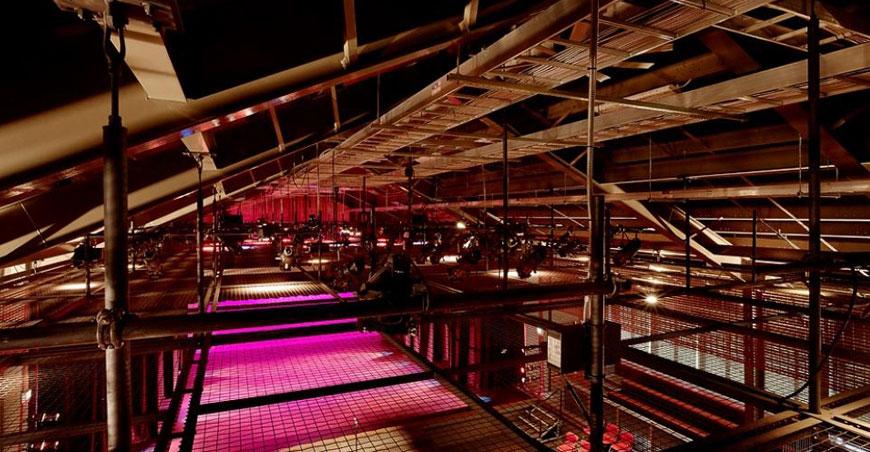Stage Grid Structure :- is a floor of structural steel channel or grating which extends over the upper portion of the stage house. Provides mounting positions for theatre equipment and staff access to any point over the stage for rigging and maintenance.
Rigging is used to make changes in the level of the stage and adjust other accessories. Lamps, lights, fabric loads, battens, ladders, frames etc are all dependent on solidarity and engineering of rigging. This basic skeleton also allows the movement of scenery, background, lighting and even people in some cases. Motorised structures effectuate the speed and flair of suspensions through a pre-selected function.










